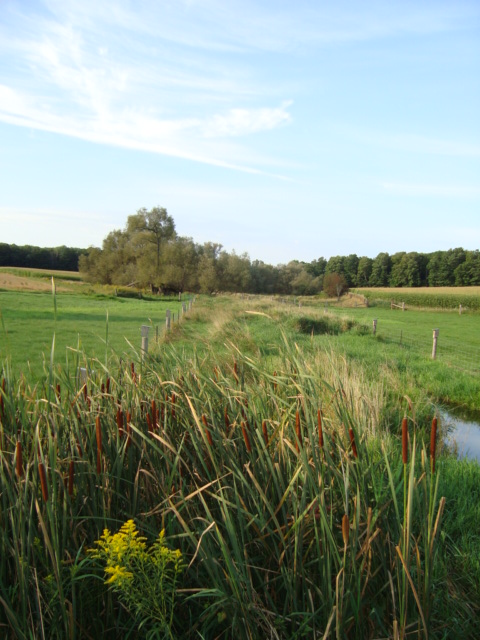ARCHIVE EQUINE NEWS STORIES
| Current news is available at TheHorsePortal.ca, Equine Guelph's online learning platform for practical, quick learning. Given the vast amount of information on horse health and welfare, Equine Guelph has archived its past news articles from 2002-2020. They are listed below, along with a search function available to find specific healthcare topics. | |
What Do Healthy Horses and Healthy Fish Have in Common?July 2010
By Patricia Lowe, Central Lake Ontario Conservation Authority
What do healthy horses and healthy fish have in common? More than you think. Conservation Authorities across Ontario, typically develop big picture aquatic resource management plans for local watersheds that identify what they and private landowners alike need to do to improve the health of local land and water resources. This plan provides a foundation upon which to make environmentally sound decisions that balance growth and urbanization with local natural resources, rural communities and their businesses.
Aquatic Resource Management Plans are developed with the knowledge of past and present fish communities, water quality, and physical conditions like drainage area and geology that define the system’s current state of health. It provides long term guidance to biologists, as they establish priorities for enhancement and protection of sensitive aquatic resources. These plans often get to a level of detail whereby Conservation Authority staff and their partners, can identify issues that are preventing the system from achieving its optimal health. Given that the majority of land within the average Ontario watershed is privately owned, they recognize working with private landowners on their lands is key to addressing these issues.
A fisheries biologist often points directly to the equine landscape as a positive contributor to healthy watersheds and fish communities. Most equine establishments sustain many acres of well managed pasture. When pasture is grazed on a proper rotation, frost seeded in early spring to increase plant production and small depressions or wet areas are drained using French drains, the horse and the fish in nearby streams, maintain better health. We know the replacement of pasture or other natural vegetation communities, with impervious surfaces like paving found in urban areas, contributes to disturbed and contaminated runoff. Scientists have found that when 10 percent of a watershed is covered by these impervious surfaces, there is a rapid decline in fish habitat and an increase in erosion and loss of bank stability of creek systems.

While not every equine establishment has a direct relationship with a stream or resident fish community, the fish you find “down watershed” are directly affected by your actions, positive or negative, wherever you are. You could compare fish populations to the canary in a coal mine, acting as an indicator for watershed health. For example excessive nutrient loading in a creek that hosts breeding and resident brook trout, will cause water temperatures to rise to a level that is not tolerated by that fish species. Breeding, spawning and nursery habitat will be negatively impacted and eventually that population of fish will disappear. What it tells us as horse owners, is that if you look after the health of your horse and its surrounding environment, the fish will quite simply, look after themselves. So fish and horses do have a lot in common.
Most Conservation Authorities have a team of staff who can tell you about your local aquatic resources, what fish species are present and how you can implement a stewardship project that will benefit horses and fish alike. Not sure which of the 36 Conservation Authorities you should contact, check out the provincial map and contact listing on the Conservation Ontario website .
This article has been prepared by the Healthy Lands for Healthy Horses Steering Committee, which is comprised of representatives from the Ontario Equestrian Federation’s Horse Facilities Council, Uxbridge Horseman’s Association, Ontario Trail Riders Association, Equine Guelph, University of Guelph, Ontario Ministry of Agriculture, Food and Rural Affairs and various Conservation Authorities.
Funding for events organized by this committee has been provided by the Ontario Soil and Crop Improvement Association from the Nutrient Management BMP Demonstration Grant funding project.
For more information please visit: www.equineguelph.ca/healthylands.php